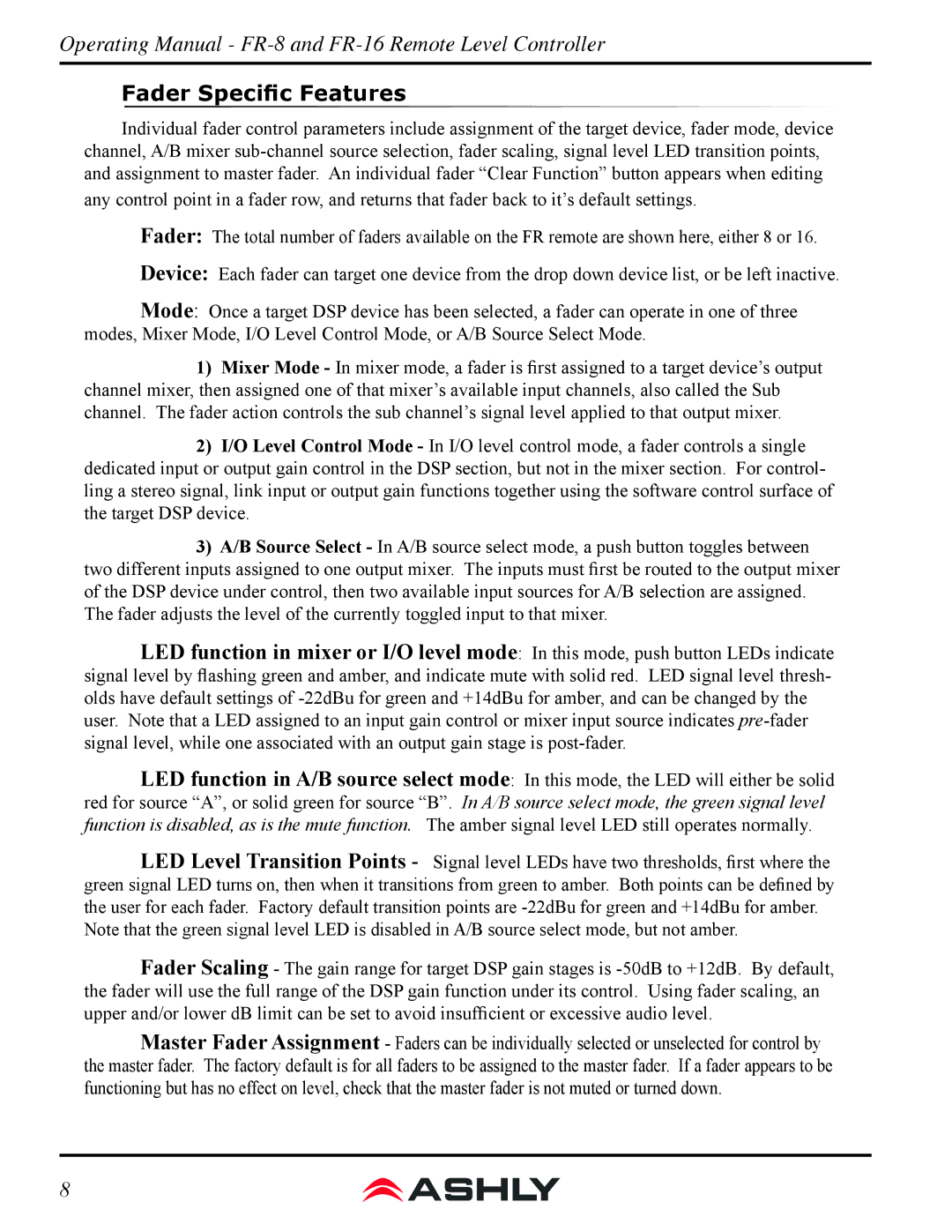
Operating Manual -
Fader Specific Features
Individual fader control parameters include assignment of the target device, fader mode, device channel, A/B mixer
any control point in a fader row, and returns that fader back to it’s default settings.
Fader: The total number of faders available on the FR remote are shown here, either 8 or 16.
Device: Each fader can target one device from the drop down device list, or be left inactive.
Mode: Once a target DSP device has been selected, a fader can operate in one of three modes, Mixer Mode, I/O Level Control Mode, or A/B Source Select Mode.
1)Mixer Mode - In mixer mode, a fader is first assigned to a target device’s output channel mixer, then assigned one of that mixer’s available input channels, also called the Sub channel. The fader action controls the sub channel’s signal level applied to that output mixer.
2)I/O Level Control Mode - In I/O level control mode, a fader controls a single dedicated input or output gain control in the DSP section, but not in the mixer section. For control- ling a stereo signal, link input or output gain functions together using the software control surface of the target DSP device.
3)A/B Source Select - In A/B source select mode, a push button toggles between two different inputs assigned to one output mixer. The inputs must first be routed to the output mixer of the DSP device under control, then two available input sources for A/B selection are assigned. The fader adjusts the level of the currently toggled input to that mixer.
LED function in mixer or I/O level mode: In this mode, push button LEDs indicate signal level by flashing green and amber, and indicate mute with solid red. LED signal level thresh- olds have default settings of
LED function in A/B source select mode: In this mode, the LED will either be solid red for source “A”, or solid green for source “B”. In A/B source select mode, the green signal level function is disabled, as is the mute function. The amber signal level LED still operates normally.
LED Level Transition Points - Signal level LEDs have two thresholds, first where the green signal LED turns on, then when it transitions from green to amber. Both points can be defined by the user for each fader. Factory default transition points are
Note that the green signal level LED is disabled in A/B source select mode, but not amber.
Fader Scaling - The gain range for target DSP gain stages is
Master Fader Assignment - Faders can be individually selected or unselected for control by the master fader. The factory default is for all faders to be assigned to the master fader. If a fader appears to be functioning but has no effect on level, check that the master fader is not muted or turned down.
8
